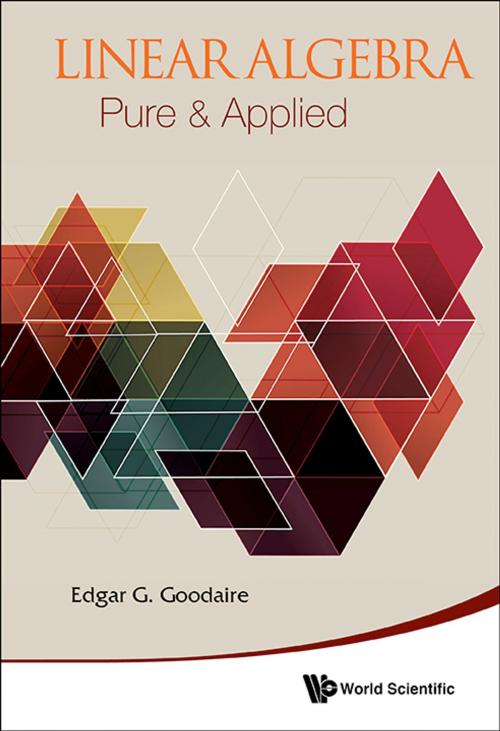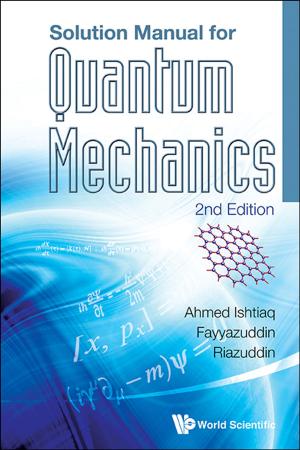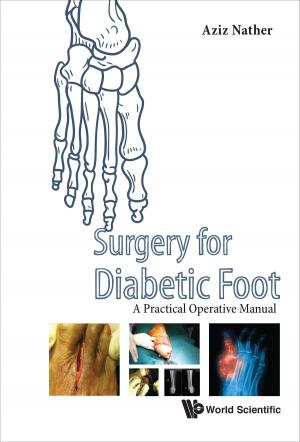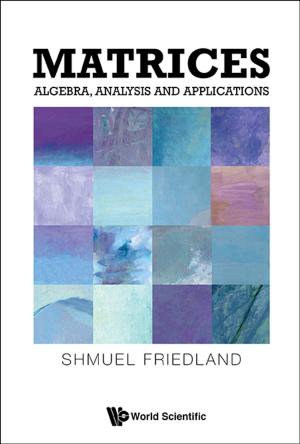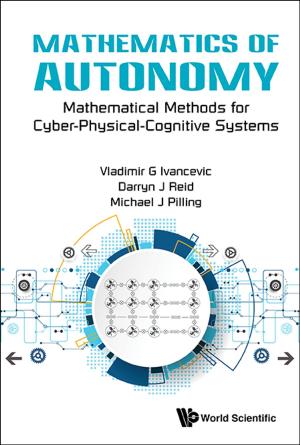| Author: | Edgar G Goodaire | ISBN: | 9789814508391 |
| Publisher: | World Scientific Publishing Company | Publication: | September 20, 2013 |
| Imprint: | WSPC | Language: | English |
| Author: | Edgar G Goodaire |
| ISBN: | 9789814508391 |
| Publisher: | World Scientific Publishing Company |
| Publication: | September 20, 2013 |
| Imprint: | WSPC |
| Language: | English |
This is a matrix-oriented approach to linear algebra that covers the traditional material of the courses generally known as “Linear Algebra I” and “Linear Algebra II” throughout North America, but it also includes more advanced topics such as the pseudoinverse and the singular value decomposition that make it appropriate for a more advanced course as well. As is becoming increasingly the norm, the book begins with the geometry of Euclidean 3-space so that important concepts like linear combination, linear independence and span can be introduced early and in a “real” context. The book reflects the author's background as a pure mathematician — all the major definitions and theorems of basic linear algebra are covered rigorously — but the restriction of vector spaces to Euclidean n-space and linear transformations to matrices, for the most part, and the continual emphasis on the system Ax=b, make the book less abstract and more attractive to the students of today than some others. As the subtitle suggests, however, applications play an important role too. Coding theory and least squares are recurring themes. Other applications include electric circuits, Markov chains, quadratic forms and conic sections, facial recognition and computer graphics.
Contents:
- Euclidean n-Space
- Matrices and Linear Equations
- Determinants, Eigenvalues, Eigenvectors
- Vector Spaces
- Linear Transformations
- Orthogonality
- The Spectral Theorem
Readership: Undergraduates in mathematics.
Key Features:
- The author is a pure mathematician who regularly asks “Why” and expects the student to answer this question regularly and precisely
- The book encourages interactive reading via “Reading Checks,” short questions most of which can be answered mentally, that appear regularly throughout the exposition
- The book provides several ways in which the reader can assess his or her progress, including true-false questions at the end of every section and a vocabulary check at the end of every chapter
- The absolutely crucial concept of eigenvalues and eigenvectors is introduced early enough that the topic can be covered easily in a first course in linear algebra
- There is a glossary at the back of the book every definition accompanied by an example of something that is and something that isn't
This is a matrix-oriented approach to linear algebra that covers the traditional material of the courses generally known as “Linear Algebra I” and “Linear Algebra II” throughout North America, but it also includes more advanced topics such as the pseudoinverse and the singular value decomposition that make it appropriate for a more advanced course as well. As is becoming increasingly the norm, the book begins with the geometry of Euclidean 3-space so that important concepts like linear combination, linear independence and span can be introduced early and in a “real” context. The book reflects the author's background as a pure mathematician — all the major definitions and theorems of basic linear algebra are covered rigorously — but the restriction of vector spaces to Euclidean n-space and linear transformations to matrices, for the most part, and the continual emphasis on the system Ax=b, make the book less abstract and more attractive to the students of today than some others. As the subtitle suggests, however, applications play an important role too. Coding theory and least squares are recurring themes. Other applications include electric circuits, Markov chains, quadratic forms and conic sections, facial recognition and computer graphics.
Contents:
- Euclidean n-Space
- Matrices and Linear Equations
- Determinants, Eigenvalues, Eigenvectors
- Vector Spaces
- Linear Transformations
- Orthogonality
- The Spectral Theorem
Readership: Undergraduates in mathematics.
Key Features:
- The author is a pure mathematician who regularly asks “Why” and expects the student to answer this question regularly and precisely
- The book encourages interactive reading via “Reading Checks,” short questions most of which can be answered mentally, that appear regularly throughout the exposition
- The book provides several ways in which the reader can assess his or her progress, including true-false questions at the end of every section and a vocabulary check at the end of every chapter
- The absolutely crucial concept of eigenvalues and eigenvectors is introduced early enough that the topic can be covered easily in a first course in linear algebra
- There is a glossary at the back of the book every definition accompanied by an example of something that is and something that isn't
